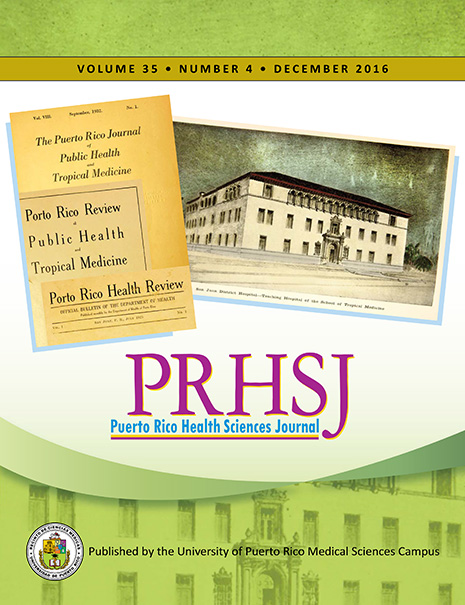Abstract
Objective: Peripartum cardiomyopathy is a rare type of heart failure to which only pregnant women are susceptible. In Puerto Rico there is a paucity of information regarding this condition. In this report we describe our experience with peripartum cardiomyopathy. Methods: This was a descriptive retrospective study. We conducted a chart review of all the patients with peripartum cardiomyopathy managed at our institution from January 2006 through December 2012. A total of 12 patients qualified for our analysis. Results: The mean age of our population was 27 (± 8) years. Eight of the twelve (67%) patients were multigravid women, with a mean parity of 2.6 (± 1.6). Most patients (75%) showed clinical evidence of anemia while pregnant, and more than half (58%) delivered prematurely. Six patients (50%) had a prior history of preeclampsia. Cardiac imaging detected a mean ejection fraction of 35% (± 8%) at the time of diagnosis. Only 1 maternal death was documented. Conclusion: Our study cohort was very similar to those in most case series in which the same condition has been studied. In order to better understand the pathophysiology of this entity and, thus, improve treatment for these patients, prospective studies are needed.
Authors who publish with this journal agree to the following terms:
a. Authors retain copyright and grant the journal right of first publication with the work simultaneously licensed under a Creative Commons Attribution License that allows others to share the work with an acknowledgement of the work's authorship and initial publication in this journal.
b. Authors are able to enter into separate, additional contractual arrangements for the non-exclusive distribution of the journal's published version of the work (e.g., post it to an institutional repository or publish it in a book), with an acknowledgement of its initial publication in this journal.
c. Authors are permitted and encouraged to post their work online (e.g., in institutional repositories or on their website) prior to and during the submission process, as it can lead to productive exchanges, as well as earlier and greater citation of published work (See The Effect of Open Access).
